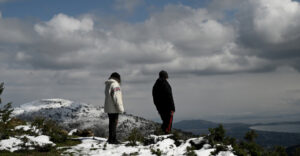According to a statement released by McMaster University, Tristan Carter and his colleagues examined Bronze Age obsidian blades unearthed at Malia on the island of Crete in order to investigate the idea that Mycenaeans from the Greek mainland had invaded the island.
This invasion hypothesis is suggested by changes in local Minoan language, burial customs, dress, and drinking habits; the destruction of Minoan sites; and the appearance of warriors’ graves at the Minoan palace of Knossos some 3,500 years ago. Vassilis Kilikoglou of the Demokritos National Center for Scientific Research used a nuclear reactor to analyse the chemical structure of the blades and determined that the volcanic glass came from the Cycladic Island of Melos.
The researchers also examined how the blades had been made and found that the technique had not changed over a millennium. It was also distinct from the practices used on the Greek mainland, Carter explained. He concluded that although fashions in burial practices, art, and dress may have shifted among elites to align with the Mycenaeans, tool manufacture by a local population of Minoan descent appears to have remained unchanged. Rather than wholesale cultural change, the study has found evidence of significant continuity after the alleged invasion, he said.
source archaeology.org
also read
Ferryboat crew member died suddenly in Kasos
Ask me anything
Explore related questions





